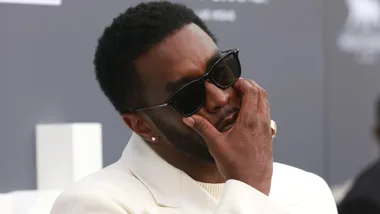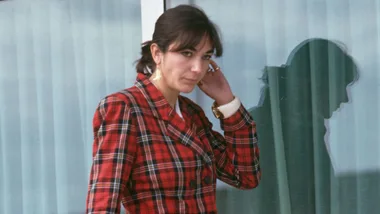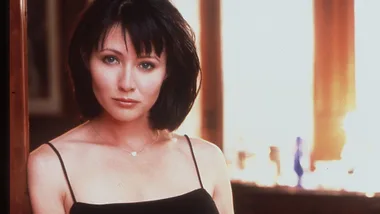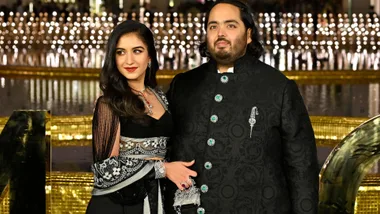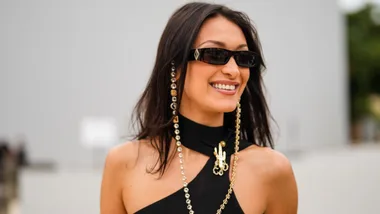While there’s no question that Shaken Baby Syndrome shatters lives, a new study is casting doubt over the way it is diagnosed. For parents who insist they’ve been falsely accused of harming their children, it’s both heartbreaking and a source of hope.
At 2.30am on December 4, 1998, Lorraine Harris’ Yorkshire home was quiet and still. Clambering out of bed, the 28-year old Australian-born mother of three made her way to her infant son’s cot. Four-month-old Patrick had been grizzly that day and the family GP suspected he was getting a cold. Harris pulled back Patrick’s cosy knitted blankets, expecting to find her treasured boy sound asleep. But when she saw him, she immediately knew something was terribly wrong.
Panic stricken and crying hysterically, Harris called an ambulance. Patrick was rushed to hospital under blue lights and the wail of sirens. But there was nothing anyone could do to revive him. Wracked with grief, Harris sobbed over Patrick’s tiny, lifeless body in a sterile hospital room. Outside the door, police were waiting.
Post mortem results showed that Patrick’s brain was swollen and that he had bleeding on his brain and behind his eyes – symptoms that are widely believed to be indicative of Shaken Baby Syndrome (SBS).
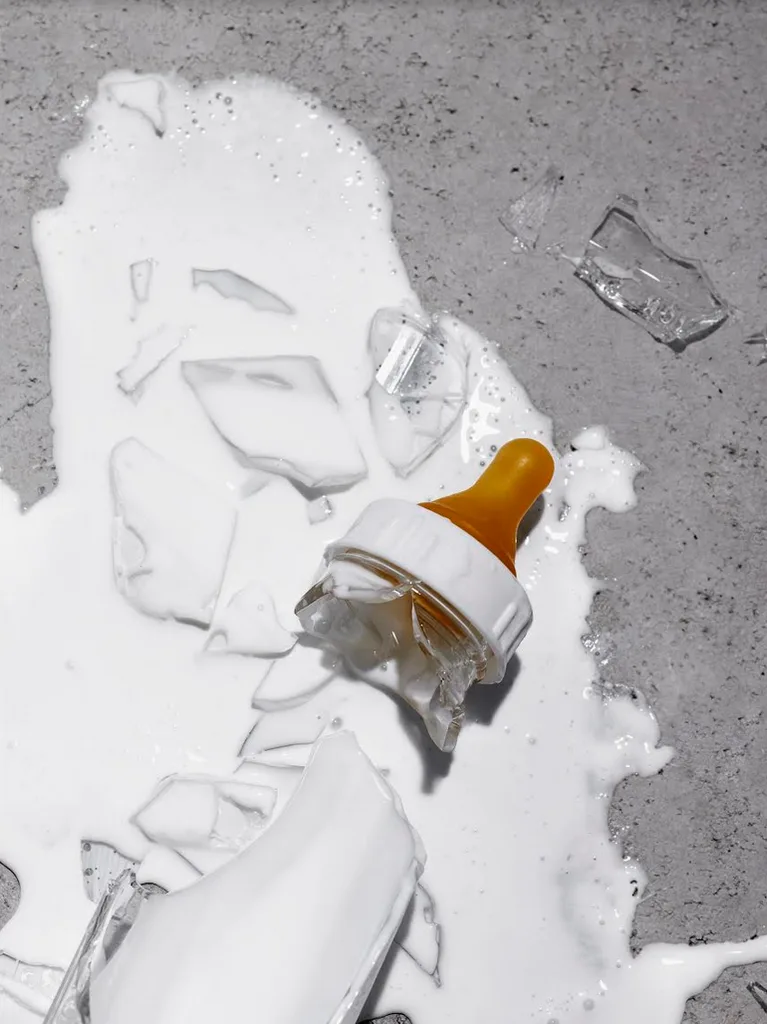
Harris was arrested and charged with manslaughter. “I felt like I was in a haze. I couldn’t talk, I couldn’t move, I was just staring into space. I’d lost the son I’d so desperately wanted – and I was being accused of killing him. I just couldn’t believe it,” she tells Marie Claire. Her trial hinged on complex medical evidence. The prosecution included a report from respected paediatric neuropathologist, Dr Waney Squier, who confirmed Patrick appeared to have been a victim of shaking. Squier based her assessment on a SBS diagnostic tool that has been used for the last 40 years.
The theory assumes that if an infant has swelling on the brain, bleeding on the brain’s surface and behind the eyes (a set of symptoms known as the triad) and the parents and carers can’t offer another explanation, then the baby has been violently shaken. Despite fervently protesting her innocence, baby Patrick’s SBS diagnosis meant Harris was found guilty of manslaughter and sentenced to three years in prison. Grieving and separated from her older two children, her incarceration was just the tip of the iceberg. Harris, who had been pregnant during the trial, gave birth to another son five months into her sentence. She knew that she wouldn’t be able to keep the baby (whom she named Matthew) with her during her sentence, but she was distraught to discover that he was to be adopted and lost forever. “I didn’t stop crying for weeks,” she remembers. “When they took Matthew away from me it broke my heart all over again.”
It was a devastating outcome for Harris, yet one that could have potentially been very different thanks to new research that has emerged concerning the diagnosis of SBS.
In February, the respected international medical journal Acta Paediatrica published a paper on a new Swedish report that critiques the existing scientific evidence behind SBS. Professor Neils Lynöe, a medical ethicist at the Karolinska Institute in Stockholm, led the two-year study. He concluded that there is no convincing evidence to show that the triad is definitive evidence of shaking. “You can’t use these studies to say that whenever you see these changes in the infant brain [the triad], the infant has been shaken – it’s not possible according to current knowledge,” he explains.

Lynöe’s findings pose an ethical dilemma: without a foolproof method to diagnose SBS, there is a risk that innocent parents will be convicted, or have their children removed from their care. On the flipside, there is also a risk that parents who have abused their children may not face the consequences. Although Lynoe’s study received backing from an extensive independent review, it has not been well received by medical agencies that support the traditional diagnosis of SBS. “Efforts were made to stop the report before it was even published,” says Lynöe. “They’re afraid that people who have abused infants might go free, or that parents will use the report as a cover up for abuse.” The doubts the study raises are familiar to Dr Waney Squier, the prosecution expert responsible for diagnosing SBS in Lorraine Harris’ manslaughter trial. For the past 17 years Squier has been questioning the validity of SBS.
Squier, who has studied infant brains for more than 20 years, is now one of a small contingent of medical experts around the globe who dispute the way SBS is diagnosed. Like Lynoe, she believes that the triad isn’t a tell-tale sign of shaking and could be caused by a number of other factors, such as genetic disorders, blood clotting in the surface of the brain (venous thrombosis) or even low falls, such as accidentally rolling off a bed or change table. The physiology of the tiny newborn brain makes it more likely to bleed, she says, and astonishingly, many healthy babies are born with at least two manifestations of the triad. “In newborn babies, 46 to 50 per cent have bleeding on surface of the brain and between 30 to 60 per cent of newborns have bleeding behind the eyes. It’s because they’re little and they’re suffering from pressure [from coming down the birth canal during labour and delivery]. Blood can’t flow out of a baby’s brain very easily when they’re being born,” she explains.
Squier also notes that in order for shaking to cause the triad, an adult would have to use considerable force. She believes this force would leave visible evidence of trauma – the baby would have neck and spinal damage, bruising, and the tissues of the brain would be torn and damaged.
“People harm children – it happens. But I have a problem accepting that they can inflict serious brain damage without leaving any marks,” she says.

Lorraine Harris served 17 months of her sentence, before being released on parole. Although she had her freedom, her life was unrecognisable: no partner, a dead son and another adopted out to new parents who wouldn’t allow any contact. When her case came up for appeal in 2005, Harris wanted to go beyond freedom: she wanted to clear her name. She was dumbfounded to find Squier had switched sides and was willing to testify for her defence. Harris’ conviction was overturned, but it was a hollow victory.
According to the statistics, SBS is rife in Australia: babies are six times more likely to die from SBS than they are from drowning. As many as 90 children will become victims of shaking every year, most often at the hands of the people they trust the most. Tragically, 18 of these babies will die. “It’s very common,” says Dr Brian Owler, consultant neurosurgeon at the Sydney Children’s Hospital, Westmead. “When I started [working in paediatrics] it surprised me how much of our time was taken up with non-accidental injuries, which included shaken babies.”
If medics suspect a baby has a non-accidental injury, says Owler, they involve specialists from the Child Protection Unit (CPU) who can investigate. “The fact that CPU even exits in children’s hospitals says something about the frequency at which these situations occur,” he notes. While Owler concedes criticism of the triad existed before the latest study, he says the CPU are trained to decipher which babies are likely to have been shakenand he was reluctant to be drawn on whether the new research would be the catalyst for any changes to current processes.
“Sometimes there are other explanations. But in many cases we know shaking is the cause of the problem,” he says.

Dr William Liley, a Queensland GP and SBS specialist, has seen the devastating effects of SBS first hand. He believes that most SBS cases happen when a baby cries excessively and the parent or caregiver reaches their limit and snaps. “The baby won’t stop crying and just won’t settle. The carer forgets just how much bigger than the baby they are and how vulnerable the baby is. No one in their right mind intentionally inflicts this injury. There is no premeditation, no monster, just ordinary people beyond their tolerance limits, who spend the rest of their lives in deep regret,” Liley explains.
If the current SBS diagnostic tool has a question mark over it, thousands of innocent people in the U.S have been wrongly convicted of murder and assault over the past 30 years, says Mark Freeman, a defence attorney in Pennsylvania who specialises in SBS.
Freeman notes that the U.S. government and the SBS medical community around the world are fully committed to the SBS triad hypothesis, so he isn’t optimistic that the new research will change the law any time soon. “I am sceptical that [it] will make much, if any, difference in the prosecution of such cases,” he says. Lynoe is more hopeful. “It has already had consequences for how guardians and parents are convicted in courts – at least in Sweden,” he says. And Australian medical anthropologist and sociologist, Dr. Helen Hayward-Brown, agrees. “I do feel it will have some impact – because it is underlining the issues which need to be brought forward – but I believe it will take a while for the impact to filter through the system,” she told Marie Claire.
“There is a strong resistance within the medical and legal communities to acknowledge these issues, as so many individuals, on a global basis, have been convicted based on the triad alone, and to acknowledge the issues would mean that it would be necessary to revisit all those convictions.”
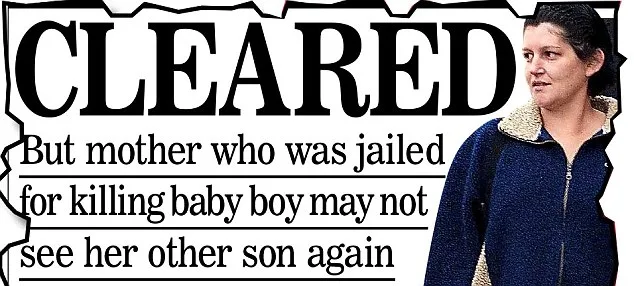
Yet even those who have been cleared of wrongdoing still have to live with the severe tarnish of the accusation. Trisha Brant, 45, a former family daycare manager from Illinois, was accused of shaking a boy in her care in 2014. Although the boy, who was 22 months old at the time, survived, experts said that his brain injuries proved he had been a victim of SBS.
Brant always insisted that she hadn’t shaken the boy, but the accusation had a devastating impact on her life. “Society turned against me, people I thought were friends – gone,” Brant tells Marie Claire. “Family members didn’t speak to me. Facebook was covered in hatred for me…. I just wanted to curl up in a hole,” she recalls.
During her trial, a biomedical engineering expert argued that it was more likely that the boy had fallen from a playpen rather than been the victim of violent shaking. Brant was found not guilty, but nine months later she is still reeling from the experience. “The local community were so against me that we were forced to move to a new suburb. I’m now being treated for post traumatic stress disorder,” she explains.
While the report findings may offer hope for others facing accusations of SBS, it is of little consolation to Lorraine Harris. Although her conviction was quashed, the experience will always cast a dark shadow over her life. While she has gone on to remarry and rebuild her life, she still carries an inner anguish. “I’ve had very low times, I’ve thought about suicide,” she confesses. “Most of the time I try and put it all to the back of my mind.”
While Harris knows she can never be reunited with baby Patrick, she still longs for Matthew, the son who was taken away from her. “He’s 18 now and I’ve never seen him. I hope one day soon he’ll come knocking on my door,” she says.
“I hold on to that day – it’s the only thing that keeps me going.”
Purple Crying
The Period of PURPLE Crying Program was developed in Canada to fight one of the huge causes of Shaken Baby Syndrome: parental frustration. It aims to educate parents about the reality of newborn crying and the guidelines are widely recognised around the world, including in Australia.
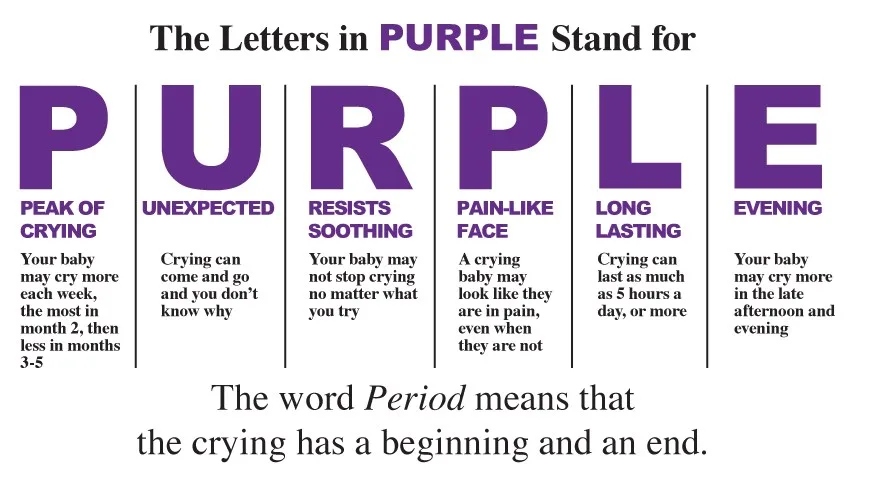
Need support?
Chat to a maternal child health nurse or counsellor via the national Pregnancy, Birth & Baby helpline: 1800 882 436
Anxiety and depression affects up to 20 per cent of new mothers. The PANDA helpline offers emotional support and counselling: 1300 726 306



